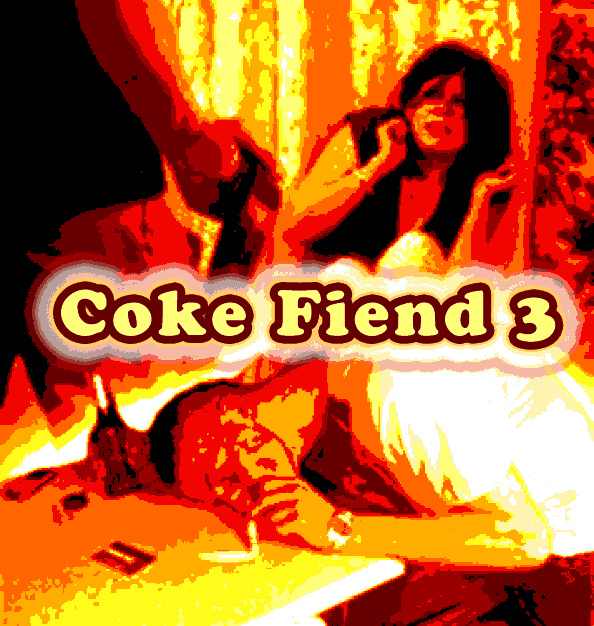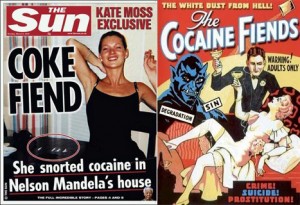 When I think of South American drug cartels, I’m reminded of the beheading videos I used to download from Limewire and Kazaa in the year 2000.
When I think of South American drug cartels, I’m reminded of the beheading videos I used to download from Limewire and Kazaa in the year 2000.


 When I think of South American drug cartels, I’m reminded of the beheading videos I used to download from Limewire and Kazaa in the year 2000.
When I think of South American drug cartels, I’m reminded of the beheading videos I used to download from Limewire and Kazaa in the year 2000.
DENVER, COLO. — Americans were excited today about reports deep within the bowels of the Romney campaign that the former Massachusetts governor is ready to go after President Obama’s use of marawana and cocaine as a teenager.
“I mean, this is a guy who admitted to cocaine use,” says a Romney adviser to Buzzfeed, “had a sweetheart deal with his house in Chicago, and was associated and worked with Rod Blagojevich to get Valerie Jarrett appointed to the Senate,” adding, “The bottom line is there’ll be counterattacks.”
President Obama has made a point of discussing his own history of using cocaine, which he refers to by its crass street name of “blow;” as well as his inhaling the vapours of the ever-popular devil weed itself. His popular autobiography, “The Audacity of Hope,” whose sales are his primary source of income — second only to “cash money” reportedly obtained selling automatic firearms to Mexican drug cartels — is a book basically about how the 44th president of the United States loved using drugs. President Obama has met desperate, repeated online pleas he legalize recreational cannabis use with guffaws and denials that he would act to liberate from a kyriarchy the American people, now arbitrarily incarcerated at rates unrivaled in the developed world.
Despite many reports, including out of Forbes magazine, that Portugal’s drug legalization policy has decimated that country’s drug abuse, Gil Kerlikowski, head of the Office of National Drug Control Policy, has stated that legalization does not combat the ills of illicit drug use. And last month, before Congress, the head of the Drug Enforcement Agency, Michele Leonhart, reiterated her administration’s commitment to utter hysteria and lack of focus on a public health crisis.
Before finally admitting, after much pressure, that heroin was more addictive than cannabis, Ms. Leonhart first characterized the matter of whether heroin is worse for an individual’s health than cannabis as “subjective.” This admission followed deliberately dishonest exchanges with Democratic Representative Jared Polis of Colorado:
REPRESENTATIVE JARED POLIS (D-CO): Is crack [a street name for free-based cocaine – ed] worse for a person than marijuana?
MICHELE LEONHART: I believe all illegal drugs are bad.
REP. POLIS: Is methamphetamine worse for somebody’s health than marijuana?
MS. LEONHART: I don’t think any illegal drug is good for —
REP. POLIS: Is heroin worse for someone’s health than marijuana?
MS. LEONHART: Again, all [sic] the drugs, they are illegal.
The administration’s enforcement strategies square well with the Romney campaign’s assessment of the president pro-drug attitudes, the unmistakable products of hedonistic, if-it-feels-good-do-it ’60s culture. Meanwhile the deputy director of NORML, a shady druggie front group, longs for the good old days under President George Bush when Californian sludge distributors operating under the guise of “medical clinics” “helping people in pain” could operate with relative impunity, writing this week, “Many of California’s most prominent and well-respected medical cannabis dispensaries and related facilities — including Oaksterdam University, Berkeley Patients Group, and Harborside Health Center (HHC) — flourished under the George W. Bush administration. But they’ll be lucky to survive President Barack Obama’s first term.”
Medical health professionals consulted off-the-record by The Internet Chronicle speculate that President Obama’s laser obsession with his administration’s present drug enforcement strategies is likely the result of the delusion and vigor associated, they say, “unmistakably” with cocaine psychosis.
After bragging to high school students in December of 2007 about how cool drugs are, then Senator Obama became the focus of the popular prohibitionist scrutiny. Obama’s candor with students came on the heels of the leak of an audiotape of President George W. Bush citing a responsibility to America’s youth to prevaricate about his own drug use — not to protect his own career, of course, but to shield them from the enormous influence the president of the United States has had on American teenagers since the Founding Fathers.
Years ago the Romney campaign pounced on the opportunity to praise President Bush’s bold, private confession to smoking weed. Mr. Romney said then, “He said when he was young and irresponsible, he was young and irresponsible, and he left it at that. And I think that in order to leave the best possible example for our kids, we’re probably wisest not to talk about our own indiscretions in great detail.”
Mr. Romney’s strategy is “simple yet elegant,” says Political Science Professor Alan Abramowitz of Emory University, adding, “It allows the candidate to bask in the veneer of family values while remaining duplicitous about that bottle of Coca-Cola he is rumored to have enjoyed, covertly, while on missionary work in France on behalf of the Church of Jesus Christ of Latter-day Saints.”

Los Angeles, Calif.- Coke Fiend 3, the hotly-anticipated sequel to Coke Fiend 2, is set to hit store shelves November 12 and fans are in a drug-fueled uproar over their own inability to pace their emotions in time with the release date.
As part of a violent new trend, fans unable to wait for the release of Coke Fiend 3 have taken matters into their own shaky hands. Several video game dealers were shot or held hostage when crazed gunmen stormed Gamestops nationwide, only to find it is not yet in stock. Pre-released copies of Coke Fiend 3 are being traded on the black market for up to $500 per copy. Some offers go as high as $1,000 for “uncut” copies of the game.
Coke Fiend 3 is the latest installment in the Coke Fiend series and features state-of-the-art next-generation graphics and online gameplay. Players find themselves plunged into a world of glorified violence in which the only frame of success are cocaine abuse and gang violence. Your character’s tolerance and ever-increasing demand for cocaine combines the elements of an open-ended RPG with those of Grand Theft Auto.
The game’s pacing, however, is what sets Coke Fiend 3 apart from all other videogames. The player starts out with a score in the upper-right hand corner, and underneath that, his money supply and drug supply figures are tallied. He also has assets which provide a bonus to the point system, such as a boathouse and prostitution ring, previously acquired near the end of Coke Fiend 2. But as his coke habit progresses, the score is gradually obscured by the edge of the screen, and is eventually pushed out completely, becoming irrelevant. As well, your assets become inaccessible through neglect and are eventually phased out completely, and forgotten amidst a haze of cocaine abuse, which sometimes spills over into real life with “great results,” according to one anonymous gamer.
Brian Whitaker, American game reviewer for Electronic Gaming Monthly, told Soviet Chronicle the immersive feel of Coke Fiend 3 is what makes this title the “most ungodly ecstatic” game for console systems to date. He added, “It’s better than God, friends, or sex with a child prostitute, which you can now do in Coke Fiend 3.”

Game designers stress the realism of the Coke Fiend series. “You can’t get totally fucked up on your own supply, or you’ll never make a profit,” explains Chris Dapriciola, executive at Coke Fiend Productions. However, borrowing elements of the popular XBOX-exclusive Fable series, players can choose the “dark side,” which in this case, is to descend into the world of crack abuse if they make too many Coke related mistakes.
For instance, when facing what at first seems like an overwhelming number of bad guys, your player can abuse up to his entire on-hand supply of cocaine all at once, and go on Scarface-style rampages, where he will temporarily gain a bottomless pain tolerance and enjoy slowed-down, sharpened murderous rages, killing his assailants with the relative ease of a Jedi Knight – on cocaine.

It is for this reason critics say that Coke Fiend glamorizes drug abuse, and point specifically to “Coked Out Mode” as a culprit in youth addiction. Game designers have countered that the newly-added Coke Rage feature leaves the character in a self-hating daze where no amount of cocaine will trigger super powers for “at least 30 seconds.”
Additionally, any damage taken during this time is compounded by latent methadone addiction because in Coke Fiend 3, there are no doctors. “Healing” is achieved through further drug use fostered by street dealers and the pharmaceutical industry, to whom your character is known to have seedy connections that unfold with the storyline.
Look for Coke Fiend 3 on store shelves Friday, or if you are among the impatient masses reading this because you scour the internet like a vacuum cleaner that must insufflate every last word of Coke Fiend news, then you’ve probably already gotten the cracked .exe from bit torrents and are in some kind of gamed-out stupor from which not even Coke Fiend 3 can absolve you, so your only choice now is to read about it here.
Well done.